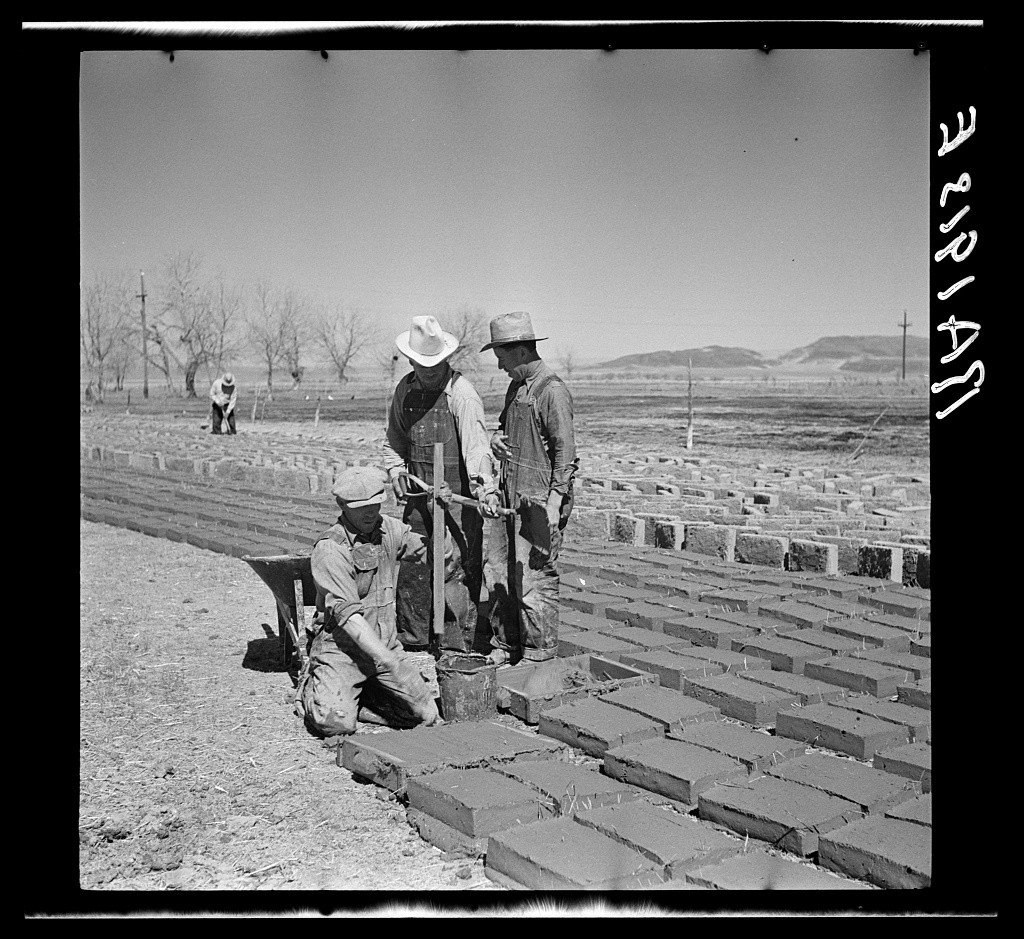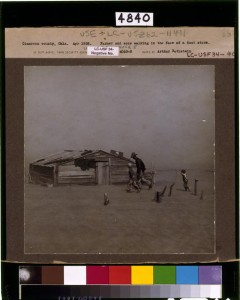
Making adobe brick. Bosque Farms, New Mexico. Arthur Rothstein, April 1936
Arthur Rothstein arrived in the Dust Bowl in April of 1936. He was 21 years old, the son of Jewish immigrants, born and raised in New York City. Fresh from Columbia University, Rothstein had been the first photographer hired by Roy Stryker, his former professor, at the Resettlement Administration, a New Deal agency that, from 1935 to 1936, relocated struggling families to communities planned by the federal government. The photography unit, later part of the Farm Security Administration, documented for the public not only the multitude of problems the nation was facing, but what the government was doing about them.

Arthur Rothstein’s iconic Dust Bowl picture
That’s from the biography of Rothstein written as part of Ken Burns’ Dust Bowl documentary. Rothstein is justly famous for his photograph of a farmer named Arthur Coble and his sons walking against the dust in Cimarron County, up against the Oklahoma-New Mexico border.
New Mexico was on the far western edge of what we can to call the “Dust Bowl”, and Rothstein’s work here is far less famous. But it’s a wonderful documentary record of a moment in time.
Roy Stryker hired the young photographer as part of a team of documentarians that included Dorothea Lange. Rothstein had to learn to drive in order to do the job.
Historian Michael L. Carlebach (behind paywall) argues that the body of work they produced is as much propaganda as it is documentary journalism or art:
The FSA photography project was the first attempt by the federal government to provide a broad visual record of American society. It was also the first systematic use of photography by the government for partisan purposes. In order to convince the American people and the Congress of the need for reform, especially in the agricultural sector, still photographs that described the deplorable conditions in the countryside were produced and disseminated.
Rothstein’s pictures are interesting in this context. As he travelled the western United States, he seemed to be especially focused on irrigation works, as the Library of Congress’s collection of his work shows. So maybe this is propaganda at a critical moment in American history selling the nation on the benefits of irrigation?
Whatever. They’re wonderful pictures.
